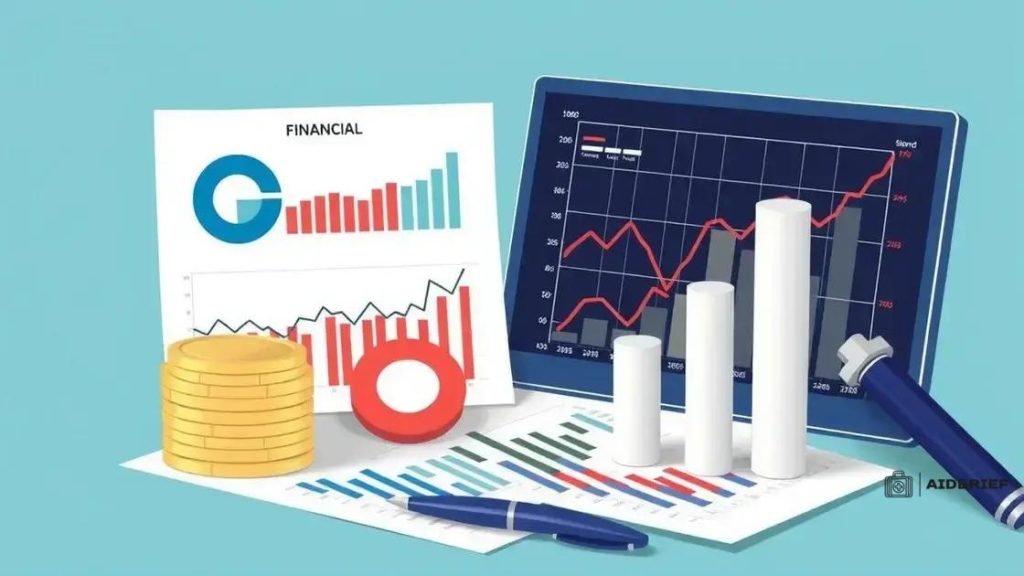Trump-era finance plans: what you need to know now

Trump-era finance plans focused on tax cuts and deregulation, significantly impacting small businesses and the economy, while creating lasting effects on growth and public awareness about personal finance.
Trump-era finance plans brought significant changes to the economic landscape. Have you wondered how these policies might impact your financial situation today? Let’s dive in and explore.
An overview of Trump-era finance plans
The Trump-era finance plans introduced a variety of economic policies that had far-reaching effects. These plans aimed to reshape the American economy by focusing on tax reforms and deregulation. Throughout his administration, several key strategies were implemented to stimulate growth and boost investment.
Key Features of the Finance Plans
One of the most notable aspects of the Trump-era finance plans was the historic tax cuts implemented in 2017. This action aimed to encourage businesses to invest and expand, leading to job creation. In addition, these tax reforms tailored lower rates for both individuals and corporations.
- Reduction of corporate tax rate from 35% to 21%
- Increased standard deduction for individuals
- Elimination of several deductions and exemptions
Furthermore, the approach towards deregulation was significant. The administration focused on reducing regulatory barriers that hindered business operations. This was seen as a way to create a more favorable environment for entrepreneurship and innovation.
Impact on the Economy
The outcome of the Trump-era finance plans has been subject to extensive debate. Supporters argue that these measures resulted in a period of economic expansion, including rising stock markets and low unemployment rates. Critics, however, point to the growing federal deficit and income inequality as drawbacks of these policies.
Overall, understanding the implications of these financial strategies is essential. They not only affected businesses but also had wider societal implications. The direction of these policies can help shape future economic decisions and public discourse on finance.
Key tax reforms introduced
The key tax reforms introduced during the Trump administration were significant and aimed at stimulating the economy. Many taxpayers saw changes that affected their tax bills, making it crucial to understand how these reforms worked.
Major Changes in Tax Policy
One of the most impactful reforms was the reduction of the corporate tax rate. This lowered rate made the U.S. more competitive globally and encouraged companies to invest in growth. Additionally, the reforms adjusted individual tax brackets, providing a more favorable outcome for many families.
- Corporate tax rate decreased from 35% to 21%
- Standard deduction was nearly doubled
- Child tax credit increased from $1,000 to $2,000 per child
Changing the standard deduction allowed many more taxpayers to benefit without itemizing deductions. This simplification of the tax code made filing easier for millions of Americans. The elimination of personal exemptions also had an effect, as families had to adjust their calculations.
Impact on Different Taxpayers
The tax reforms had varied effects across different income levels. While some taxpayers enjoyed significant savings, others faced changes that complicated their tax situations. The reform aimed to lower taxes for those in the middle class while providing incentives for businesses to grow and hire.
Understanding these changes is essential for making informed decisions about finances and investments. Overall, the tax reforms were designed to promote economic growth while attempting to address the needs of a diverse population. Keeping track of these modifications helps individuals navigate their tax responsibilities effectively.
Impact on small businesses

The impact on small businesses during the Trump administration was significant, as many policies aimed to encourage growth and innovation. Small businesses form the backbone of the U.S. economy, and understanding these changes helps in assessing their economic environment.
Tax Cuts and Deduction Changes
With the introduction of the Tax Cuts and Jobs Act, small businesses benefited from reduced corporate tax rates and enhanced deductions. The act allowed for a 20% deduction on qualified business income, which directly boosted small business profits.
- Access to lower tax rates encouraged reinvestment
- Increased cash flow allowed for expansions
- Lower tax burden improved financial stability
Moreover, the tax reforms made financing easier for small companies. Many owners were able to save money, which they could then use to hire more staff or invest in new equipment.
Deregulation Effects
Deregulation under the Trump administration also had a notable effect. By reducing excessive regulations, small businesses found it easier to navigate compliance issues. This shift led to lower operating costs, allowing them to focus on growth.
For instance, the administration rolled back several regulations related to environmental standards. Although this was controversial, many small manufacturers felt the relief from regulatory burdens had a direct positive impact on their operations.
Understanding the overall effects of these changes is crucial for small business owners. Having clearer paths to grow and sustain their businesses is beneficial in a competitive market. The impact on small businesses during this time continues to influence discussions around economic policies.
Debt management strategies
Debt management strategies during the Trump era focused on helping individuals and businesses manage their financial obligations more effectively. With changes in policies and a fluctuating economy, understanding these strategies has become crucial for many.
Key Debt Management Techniques
One effective strategy was consolidating debt. By consolidating multiple debts into a single loan, borrowers could reduce their interest rates and simplify their payments. This method often made it easier for individuals and businesses to stay on track with their financial responsibilities.
- Lower interest rates on consolidated loans
- One monthly payment instead of multiple
- Potential for improved credit scores
Another important technique was budgeting. Those who carefully examined their income and expenses could find ways to pay down their debts more effectively. A common suggestion was using the 50/30/20 rule, where 50% of income goes to needs, 30% to wants, and 20% to savings or debt repayment.
Utilizing Financial Tools
Many people turned to financial tools and resources that became available during this time. Apps and online services helped track spending, manage budgets, and create plans for repaying debt. These tools empowered individuals to take control of their finances, providing insights that were previously hard to gather.
Staying informed about interest rates and terms of loans was important as well. Knowledge about changes allowed borrowers to make informed choices, like refinancing if better terms became available. The debt management strategies introduced or popularized during this era played a role in helping many navigate their financial challenges, improving personal finance practices.
Looking ahead: lasting effects
Looking ahead, the lasting effects of the Trump-era finance plans will continue to influence both the economy and individuals for years to come. Understanding these impacts is essential for everyone, from small business owners to everyday taxpayers.
Economic Growth and Challenges
One key area to consider is the overall economic growth that occurred during and after these reforms. Many argue that the tax cuts stimulated investment and helped increase job opportunities. However, the resulting federal deficit has raised concerns about long-term sustainability.
- Job creation during the Trump administration
- Increased corporate investments
- Potential risks of increased national debt
The effects of deregulation also play a critical role in shaping the future. Some industries saw a boom in productivity due to fewer restrictions, while critics worry about the environmental consequences. Balancing growth with sustainable practices will be a significant challenge moving forward.
Changes in Public Sentiment
The shift in financial policies has also changed public sentiment. Many people are now more aware of their finances and the broader economic landscape. The discussions surrounding personal finance strategies have become more prominent, influencing how individuals approach their financial decisions.
As policies continue to evolve, the impact on small businesses remains a focal point. Supporters of these reforms believe that they laid the groundwork for a favorable business climate. However, potential future economic policies may alter this landscape drastically.
In summary, the lasting effects of the Trump-era finance plans are multifaceted. They require ongoing evaluation as they influence policymaking and the economic experiences of Americans. Being informed about these changes will help individuals and businesses navigate the future effectively.
FAQ – Frequently Asked Questions about Trump-era finance plans
What were the main tax reforms introduced during the Trump administration?
Key tax reforms included a reduction in corporate tax rates and an increase in the standard deduction for individuals.
How did these finance plans affect small businesses?
The tax cuts and deregulation helped small businesses by reducing tax burdens and encouraging investment, leading to potential growth.
What is the impact of deregulation on the economy?
Deregulation aimed to reduce barriers for businesses, which could increase productivity, though it raised concerns about environmental standards.
What should individuals do to adapt to these lasting effects?
Staying informed about financial practices and policy changes can help individuals make better financial decisions in the evolving economic landscape.





